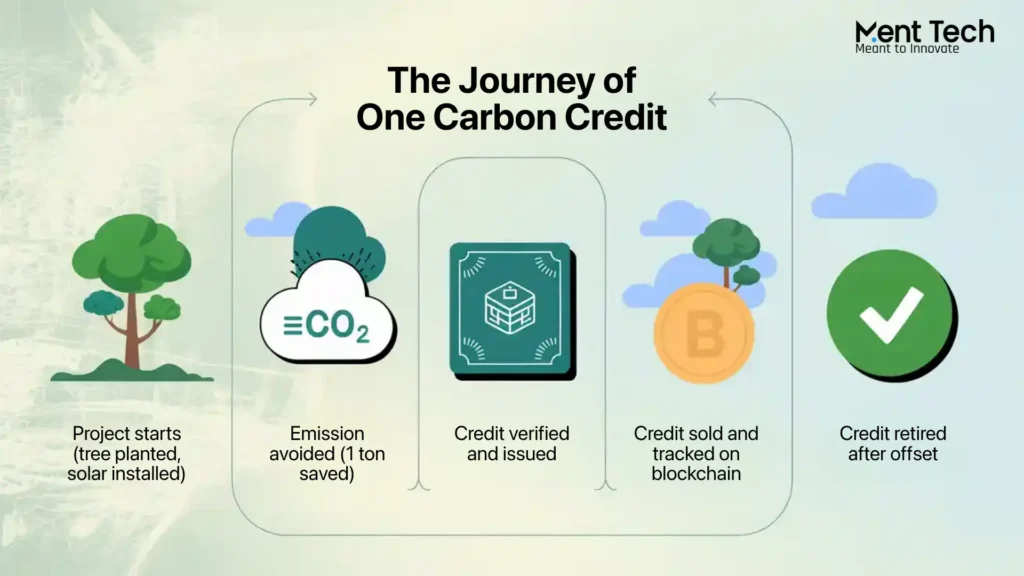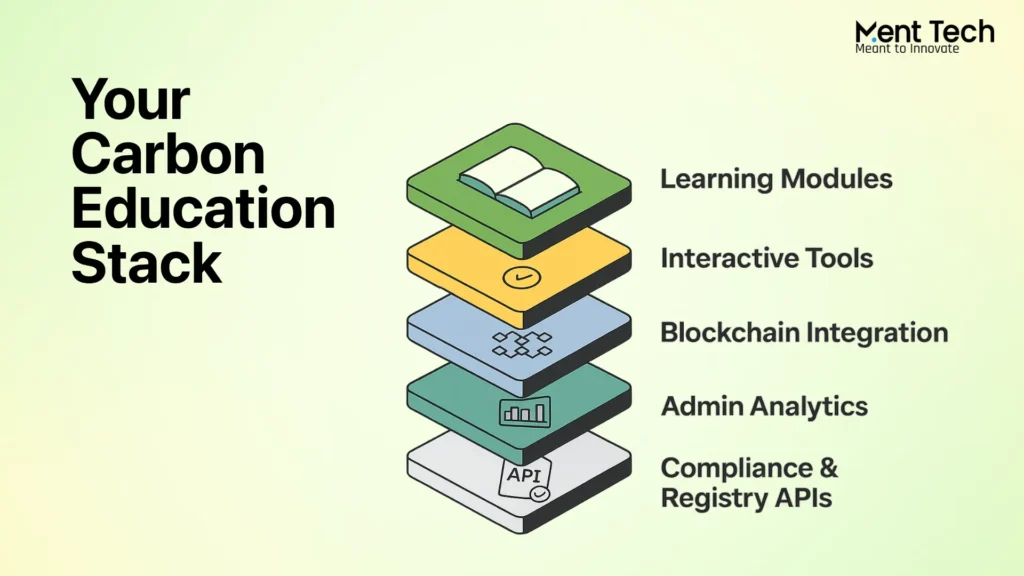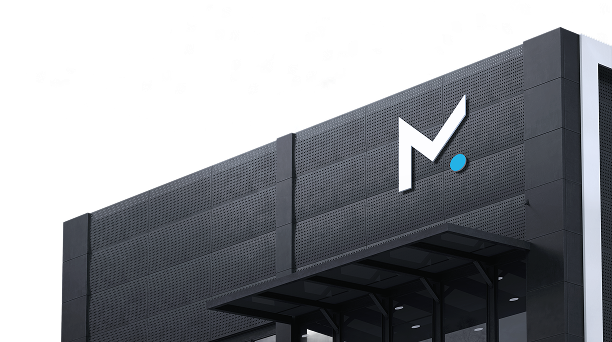The carbon market is growing fast. Analysts expect it to cross 2.6 trillion dollars by 2028. But here’s the truth most people won’t admit: very few actually understand how it works.
Ask a startup founder, a climate-conscious consumer, or even someone working at a sustainability-focused company. You’ll likely hear the same questions. What exactly are carbon credits? How do you use them? Can regular people or small businesses really take part?
This confusion isn’t just a knowledge gap. It’s one of the primary reasons more people don’t engage in climate action.
That’s where a carbon credit education platform can change the game. It helps people learn the basics, understand the system, and see how their choices connect to the planet. When built right, it doesn’t just educate; it motivates.
Add blockchain technology into the mix, and you unlock something even more powerful. A system where people can learn, track, and act with full transparency.
This guide will walk you through how to build a carbon credit learning platform that’s clear, credible, and designed to make a real impact.
What Are Carbon Credits?
At the simplest level, a carbon credit is a kind of permission slip. It gives a person or company the right to emit one ton of carbon dioxide. If you’re a business that produces emissions, you can buy credits to balance things out. If you’re running a project that reduces emissions, like planting trees or building clean energy, you can earn credits and sell them.
That’s how the carbon credit system works in theory. But in practice, it’s full of questions and confusion.
People wonder where credits come from. How they’re verified. Who ensures they are not counted twice? These aren’t small details; they’re what builds trust. And without that trust, the entire system struggles.
That’s why education is so important. A strong carbon credit platform should teach people where carbon credits come from, how they connect to real-world action, and why carbon assets play a role in long-term sustainability.
When more people understand these ideas, they become part of the solution. They support cleaner choices, ask better questions, and start making decisions that count.
Understanding How Carbon Credits Work in the Real World

The concept of carbon credits sounds simple, but how they operate in the real world is often misunderstood. Let’s break it down through an actual scenario.
Imagine this:
- A wind farm is built in a developing region
- It replaces energy that would have come from fossil fuels
- As a result, carbon emissions are avoided
- The project earns carbon credits, each representing one ton of carbon dioxide that wasn’t released
- These credits can be sold to individuals or companies who want to offset their own emissions
This is how the global carbon credit platform ecosystem functions. It connects the people creating positive environmental impact with those who want to support that impact financially and practically.
Why This System Needs Better Understanding?
Despite its importance, most people are still unclear about how carbon credits move through this system. And that’s a problem.
Here’s where things get confusing:
- How are carbon projects verified?
- Who keeps track of these credits?
- Can the same credit be sold twice?
- What are carbon assets and how are they different from offsets?
- Where does carbon credit tokenization fit in?
Without clear answers, trust breaks down. And when people don’t trust the system, they don’t participate.
This Is Where Education Makes the Difference
To bring more people into the climate economy, we need to build platforms that explain
- How carbon credits work from creation to retirement
- What kind of projects generate real impact
- How carbon assets are tokenized and tracked
- Why transparency, traceability, and accountability matter
A strong carbon credit learning platform gives users this knowledge in a format they can actually understand. It avoids jargon. It uses examples. It turns complex mechanisms into simple, visual steps.
By teaching the process clearly, we empower people to make better decisions whether they’re buying credits, building a green business, or launching their own sustainability project.

Why Education Is the Missing Link in Climate Action?
Most people care about the environment. They recycle, switch to eco-friendly products, even donate to green causes. But when it comes to carbon credits, very few take real action.
Why?
The system continues to be perplexing, aloof, and challenging to rely on. Without proper education, even well-meaning individuals and businesses stay on the sidelines.
Here’s what a carbon credit education platform can fix:
1. It clears up the confusion
Many still ask, what are carbon credits and how are they created? A learning platform explains these fundamentals in plain language with real-world examples. It shows the full journey from emission reduction to carbon asset creation and credit retirement.
2. It helps users connect to real impact
People are more likely to support climate action when they understand what their contribution is funding. A strong platform showcases verified projects like clean cookstove programs or reforestation and explains how carbon credit tokenization ensures transparency.
3. It turns passive readers into active participants
Education is not just about knowledge. It’s about motivation. Understanding how carbon credit platforms operate and how to offset emissions empowers users to take action. They start buying credits, supporting projects, or launching sustainability ideas of their own.
4. It builds trust through transparency
A modern carbon credit learning platform uses blockchain and on-chain tracking to show every step clearly. Users can see how credits are issued, verified, and retired—removing the fear of greenwashing or double-counting.
5. It makes climate literacy part of business strategy
For startups and enterprises, knowing how carbon credits work is now a core part of ESG strategy. A platform can help train teams, align with compliance, and build internal understanding of carbon markets from the ground up.
When education meets accessibility, participation follows. And the more people who understand how these markets work, the faster we move toward real, measurable climate progress.
How Blockchain Brings Trust to Carbon Credit Education?
One of the biggest reasons people hesitate to join the carbon credit market is trust. They don’t know where the credits come from, who verifies them, or whether the system is even real. This is where blockchain technology becomes a powerful tool not just for trading but for learning.
A well-designed carbon credit education platform can use blockchain to make the entire learning experience more credible, trackable, and action-driven.
1. Verifying Every Step with On-Chain Records
Blockchain creates a permanent record of each carbon credit from the project that generated it to the moment it’s used. Learners can see real examples of how carbon credits move through the system, which builds trust and removes the fear of fraud or double counting.
2. Rewarding Learners Through Smart Contracts
Education doesn’t have to be boring. Using smart contracts, platforms can reward users for finishing lessons, passing quizzes, or taking action. These rewards can be in the form of tokens, badges, or even access to real carbon assets.
This feature also opens up collaboration with a crypto marketing agency that can help build reward-based campaigns to attract more users to the platform.
3. Supporting Real-Time Learning with Tokenized Simulations
Users can simulate offsetting their lifestyle or business emissions. By inputting basic data, they can receive tailored suggestions for buying or retiring credits all shown on-chain. This interactive layer helps users understand how carbon credit tokenization works in a real-world setting.
4. Scalable Architecture for Long-Term Growth
Whether you’re a startup or a public agency, blockchain helps your education platform scale. With the support of a trusted blockchain development company, you can integrate smart contracts, APIs, and wallet systems into your platform from day one.
You can also build layered tools that go beyond education, such as issuing tokenized certificates, tracking offset transactions, or even adding modules for compliance.
5. Connecting with Broader Crypto Infrastructure
As the platform grows, there’s room to connect with crypto solutions like payment rails, identity wallets, and trading modules. For teams planning deeper integration, our experts can help you expand into areas like cryptocurrency exchange development services to support real transactions alongside education.
With blockchain, education becomes transparent. Every user action, every verified credit, every learning milestone can be tracked in a way that builds long-term credibility and user confidence.
Key Features Every Carbon Credit Learning Platform Should Include
A good carbon credit learning platform should not just explain concepts. It should assist users in making connections, taking action, and developing trust in the process. Whether you’re building for a startup, nonprofit, or a global audience, these features are essential for driving real climate participation.
Here’s what your platform needs to deliver:
1. Interactive Learning Modules
Keep lessons short, clear, and visual. Use videos, illustrations, and step-by-step guides to explain:
- What are carbon credits and why they matter
- How carbon credits work in different industries
- The difference between offsets, removals, and carbon assets
2. Gamified Quizzes and Micro-Certifications
Learning becomes more fun and memorable when users are rewarded. You can add:
- Quizzes after each module to reinforce key takeaways
- Digital badges or certificates for completing topics
- NFT-style rewards or on-chain proofs to showcase learning
3. Carbon Offset Simulators
Let users see how their lifestyle or business choices impact emissions. Simulators can:
- Calculate personal or company-level carbon footprints
- Suggest offset options based on actual behavior
- Link simulations with verified carbon credit projects
4. Tokenized Learning Milestones
By using blockchain, you can give learners verifiable records of their progress. These records can be:
- Added to their profile as on-chain credentials
- Shared with employers, partners, or institutions
- Used to unlock access to new content or climate campaigns
5. Admin Dashboard for Real-Time Monitoring
Your platform also needs tools for internal teams. A simple, clear dashboard helps:
- Track user progress and engagement
- Monitor how users interact with carbon assets
- Adjust course content based on performance metrics
With help from a trusted blockchain development company, these features can be built quickly and integrated with external APIs, carbon registries, and tokenization services.
As your platform grows, you can also partner with a crypto marketing agency to bring in new audiences and promote learning-based incentives. If you plan to expand into user transactions, integrating crypto solutions or adding modules from cryptocurrency exchange development services can support that transition.
Real Case Studies That Prove This Works
To understand what a good carbon credit learning platform looks like, it helps to study those already experimenting in the field. These aren’t theoretical pilots — they are real platforms combining education, blockchain, and sustainability in creative ways.
Here’s how five different teams are approaching this challenge:
1. Turning Trees into Learning Tools
One project built an educational layer on top of tree-backed digital assets. Users were able to scan QR codes tied to real trees, view their CO₂ absorption in real time, and learn how reforestation ties into carbon markets.
Key insight: Giving users live data and visuals helped them understand that a carbon credit isn’t just a token. It’s the outcome of real-world impact.
2. Breaking Carbon Down for First-Time Users
Another platform simplified carbon credit transactions through a clean, guided interface. The system broke down key steps: issuing, verifying, buying, and retiring credits, all while walking users through the logic behind each.
What worked: The process became part of the lesson. Every action a user took also taught them something about the ecosystem.
3. Embedding Climate Education into Corporate Workflows
One enterprise solution integrated carbon tracking into employee training modules. Staff could monitor their team’s footprint, join internal offset campaigns, and earn credentials for completing sustainability lessons.
Why it mattered: Carbon education stopped being a side activity and became a core part of company culture.
4. Teaching Blockchain by Using It
A blockchain-focused team launched their own internal emissions audit, then used the results to create a hands-on lesson. Users could trace the journey from footprint calculation to offset purchase and retirement all through the platform.
Lesson learned: Showing your own carbon actions as an example creates trust. It makes learning feel grounded and honest.
5. Government-Backed Platforms with Compliance Built In
In one national rollout, a public agency launched a portal where businesses could learn how to participate in regulated carbon markets. The platform featured explainers, real-time dashboards, and compliance simulations.
Big takeaway: Public-facing tools with built-in education help bring large industries into the climate space faster.
These examples show there’s no single blueprint. Some platforms lead with visuals, some with data, and some with interactivity. But all of them prove the same thing: people learn faster and take action more confidently when the experience is built around clarity and credibility.

What It Costs to Build a Carbon Credit Education Platform?
The cost of building a carbon credit learning platform depends on what you want it to do. A simple MVP with basic lessons will be far more affordable than a full platform with blockchain integration, real-time dashboards, and certification tools.
Here’s how to think about the main cost drivers:
Key Factors That Affect the Budget
- Feature Scope
Interactive learning, quizzes, wallet support, and smart contracts all add to development hours - Blockchain Setup
Choosing between Ethereum, Polygon, or a private chain changes infrastructure cost and scalability - Custom vs Ready-to-Deploy
A white-label platform is faster and cheaper. A custom build gives you more control but takes longer - Content Volume
Do you need video explainers, quizzes, multilingual support, or deep integrations with registries? - User Roles and Admin Tools
Role-based access, analytics, and verification systems add complexity on the backend
Estimated Cost Breakdown
| Project Type | Estimated Cost | What’s Included |
| Minimum Viable Platform | USD 20,000 to 40,000 | Basic learning modules, quizzes, dashboard, wallet connection |
| Mid-Level Interactive Platform | USD 40,000 to 60,000 | Add carbon footprint simulator, reward system, and tokenized certificates |
| Full Custom Platform | USD 60,000 and above | Custom UI, smart contracts, carbon credit tokenization, multilingual setup |
| Using Blockchain-as-a-Service | Flexible subscription | Great for startups that need faster deployment and limited in-house development |
Partnering with a seasoned blockchain development company can help streamline the process. If your project also includes token rewards or transactions, you may also explore options tied to cryptocurrency exchange development services or crypto solutions for real-world integration.
Want a more accurate estimate? Share your idea, and we’ll scope it based on features, users, and timelines.
Why Work With a Blockchain Development Team That Understands Climate Tech?

Building a carbon credit education platform is not just about writing lessons or launching a website. It’s about building trust, handling sensitive data, and aligning with global climate goals. That’s why the partner you choose matters.
At Ment Tech Labs, we bring together experience in blockchain development, sustainability, and product execution. Our team has helped founders, climate startups, and global businesses design platforms that are user-friendly, technically sound, and ready for scale.
Here’s what sets us apart:
Deep Focus on Blockchain and Climate Integration
We don’t treat climate projects as side experiments. Our developers understand how to:
- Build smart contracts for carbon asset tracking
- Integrate with carbon registries and token APIs
- Create transparent, verifiable records of user activity
This ensures every credit, course, or certificate is tied to real value.
End-to-End Product Execution
From idea to launch, we offer everything you need under one roof:
- Custom design and branding
- Frontend and backend development
- Wallet integration and on-chain rewards
- Admin panels and performance dashboards
Our experience with cryptocurrency exchange development services also helps clients add secure transaction layers when needed.
Strategic Support from a Web3 Native Team
We go beyond technical builds. As a blockchain development company that understands the Web3 ecosystem, we offer:
- Growth strategy and referral flows
- Incentive design and token mechanics
- Support from a crypto marketing agency if needed
This makes us a long-term partner not just a short-term vendor.
If you’re serious about building a platform that educates, engages, and scales responsibly, Ment Tech Labs is here to help. We would be delighted to help transform your climate vision into a practical and trustworthy product for people to use.
Frequently Asked Questions:
Carbon credits are permits that represent one metric ton of carbon dioxide removed or avoided from the atmosphere. These credits can be bought or sold, allowing businesses or individuals to offset their emissions by funding climate-positive projects like reforestation or clean energy.
Carbon credits work by creating a financial incentive for emission reduction. Projects that reduce or remove carbon can generate credits. These are verified, tracked, and sold to others who want to offset their emissions. Once used, the credits are retired so they cannot be sold again.
A carbon credit education platform is an online tool designed to teach users how carbon credits work, how they’re created, and how they support climate action. These platforms may include learning modules, quizzes, offset simulators, and certification tools.
Using blockchain in a carbon credit learning platform ensures transparency and traceability. Smart contracts can verify credits, track progress, and issue token-based certificates. This builds trust and prevents issues like fraud or double counting.
The cost to build a carbon credit platform ranges from USD 20,000 to 60,000 or more, depending on features. Basic platforms include education tools and dashboards. Advanced versions include blockchain integration, tokenized credits, multilingual support, and real-time data tracking.
Yes. With the help of a blockchain development company like Ment Tech Labs, you can integrate carbon credit tokenization into your platform. This allows users to learn, track, and even retire credits using blockchain-based systems.
A crypto marketing agency can help promote your education platform through campaigns, referral programs, community building, and influencer partnerships. This is especially useful if your platform uses token rewards or Web3 features.


